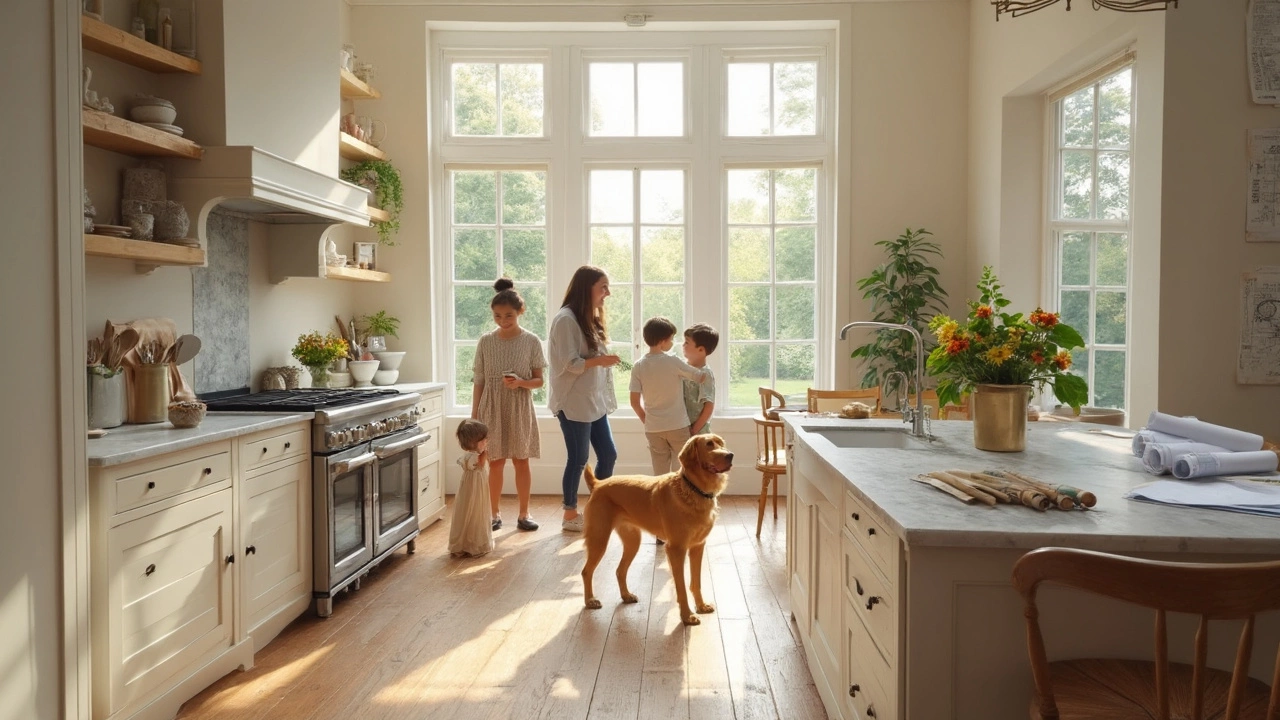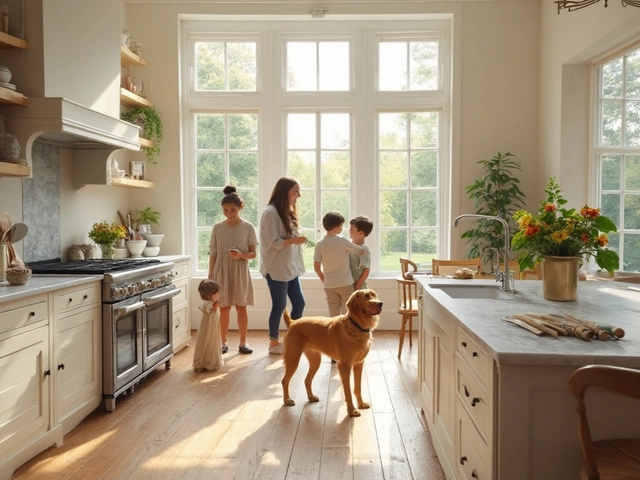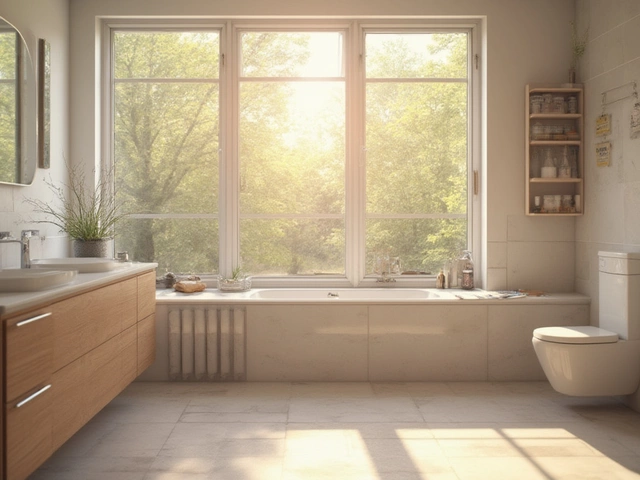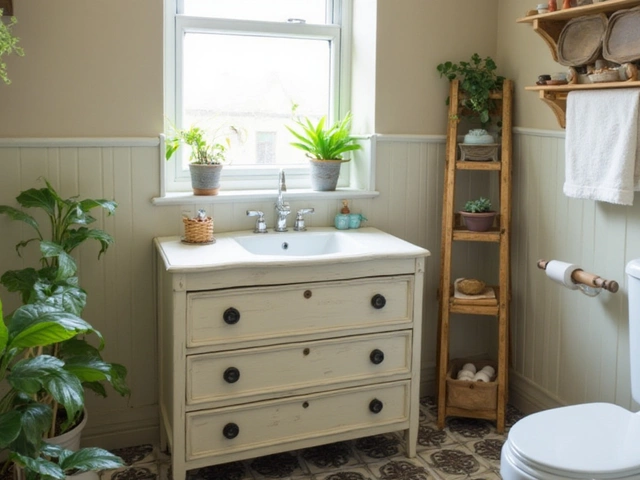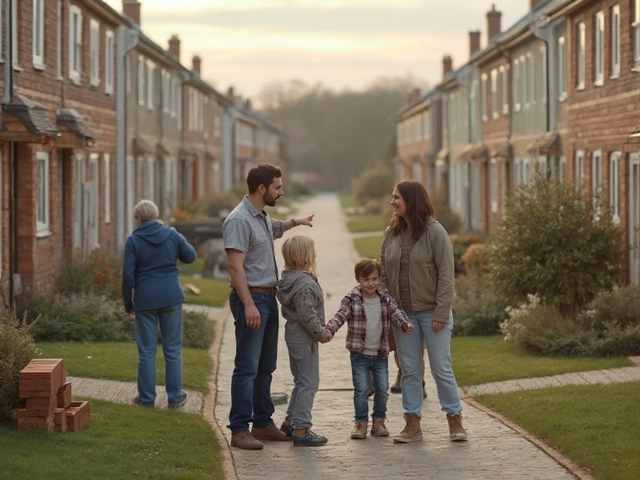Not every renovation is a winner. Some folks will throw down serious cash for heated towel racks or designer wallpaper, and end up scratching their heads later, wondering why buyers aren’t lining up. Meanwhile, someone else rips out a tired kitchen, updates some lighting, and suddenly has a bidding war on their hands. The real question is, why do certain upgrades pay off big while others barely move the needle? The answer's not just about taste—or even about budget. If you want top dollar on your property, you’ve got to know what makes buyers swoon and what makes them shrug.
Why Kitchens and Bathrooms Rule the “Return on Investment” Game
Ask any realtor where to spend renovation money, and the first words out of their mouth are usually “kitchen” and “bathroom.” The numbers back this up. According to Remodeling Magazine’s 2024 Cost vs. Value report, a minor kitchen remodel can recoup about 87% of its cost. Go for a full-on kitchen overhaul, and you're still looking at a solid 76% return. Bathrooms are just as mighty: a mid-range bathroom revamp averages nearly 72% back.
But it’s not just about percentage of return. Think of your life at home—people naturally gravitate toward kitchens and want comfortable, clean bathrooms. These spots are the “showpieces” when someone tours a house, and they say a lot about how well you’ve taken care of the rest of the place. If the kitchen feels dark, cluttered, or stuck in 1997, it’s almost a guarantee buyers will mentally subtract thousands from their offer. On the flip side, a sleek, light-filled kitchen makes it easier for people to imagine themselves cooking, laughing, or hosting holiday brunches. That emotional connection works like magic.
The kicker? You don’t have to blow your budget on designer countertops or top-tier appliances. Often, a smart facelift beats a total gut-job, especially when money’s tight. Think new cabinet fronts, modern pulls, a quality faucet, perhaps open shelving or a statement backsplash. For bathrooms, things like swapping in a modern vanity, re-grouting tiles, and installing updated fixtures can totally transform the space without requiring a full demo. If you’re savvy, you can pick up brand-name sinks, tiles, or faucets at warehouse discount stores.
You’ll find some people swear by adding luxuries like heated floors or a rainfall shower. Sure, they’re a nice touch, but they’re not usually the deciding factor—unless you’re in the luxury market. Most buyers just want spaces that feel clean, smart, and up-to-date. And let’s not forget lighting: a well-placed LED or some under-cabinet lights work wonders. If you do splurge, focus on elements you actually touch every day, like faucets or door handles, since these make a lasting impression.
To give you a quick look at ROI stats on kitchen and bathroom remodels, check this table:
| Project | Avg. Cost (USD) | Avg. ROI (%) |
|---|---|---|
| Minor Kitchen Remodel | 27,500 | 87 |
| Major Kitchen Remodel | 79,000 | 76 |
| Mid-Range Bath Remodel | 24,000 | 72 |
| Upscale Bath Remodel | 75,000 | 60 |
Boosting Curb Appeal: The Power of First Impressions
Let’s get honest for a sec: no matter how dreamy your kitchen is, if the outside of your house looks sad or dated, people might not even make it through the front door. Researchers at Michigan State University found that homes with attractive landscaping can fetch anywhere from 5% to 12% more than similar homes with lackluster yards. It’s not just about mowing the lawn either—details like fresh paint, updated front doors, and clean walkways really catch the eye.
What you’re shooting for is simple: when someone parks at the curb, they should want to see more. A well-cared-for yard, some new mulch, bright flowers, or even a striking house number sign goes further than you think. If you’ve got old vinyl siding that’s seen better days, replacing it isn’t just cosmetic—it made the top 3 projects for ROI in nearly every cost-vs-value survey this last year. New siding can recoup close to 80% of its cost. Even just re-painting or power washing can feel transformative.
Garage doors are another weirdly powerful upgrade. According to the 2024 Remodeling Magazine survey, replacing your garage door recoups about 94% of its cost nationally—the highest ROI of any single renovation. You probably never think about garage doors, but buyers do as they drive by a house. Modern doors with smart controls or windows make a place look instantly more expensive.
People often overlook outdoor lighting, but it delivers. Solar pathway lights, porch lanterns, or even some string lights strung over the patio can turn evening showings into something special. Gimmicks like fountains or elaborate garden beds often don’t deliver as much bang for the buck, unless your neighborhood is into that kind of thing. Stick to keeping it neat, fresh, and welcoming, and you’re golden. Here’s a quick checklist for fast curb appeal wins:
- Fresh mulch and some new, low-maintenance plants.
- Repaint or refinish the front door, or swap out for a modern style.
- Install visible, stylish house numbers.
- Upgrade porch lighting or add path lights.
- Power-wash walkways, siding, and driveways.
- Fix or upgrade the mailbox, if it’s seen better days.
- Clean windows and gutters, front and back.
And if you’re not up for landscaping yourself, local pros often take care of everything for a few hundred bucks—money very well spent when a quick sale can net you thousands more.
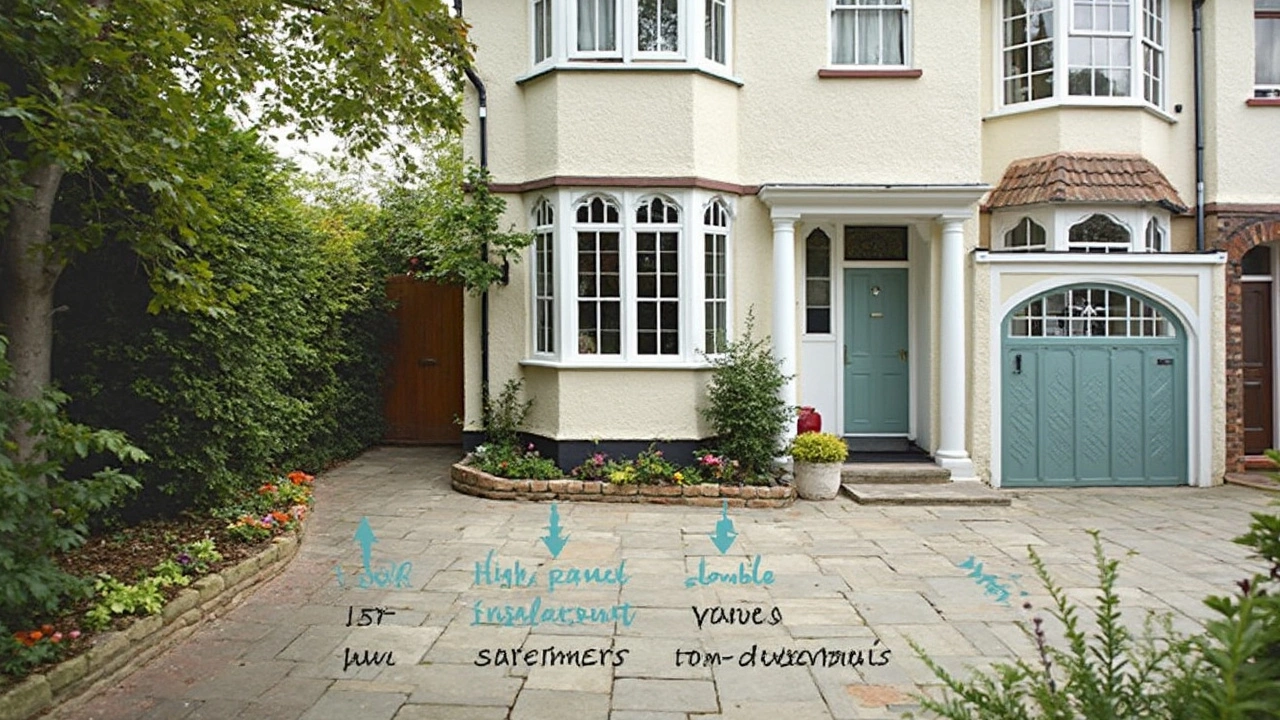
The Hidden Winners: Energy Efficiency and Smart Tech
Buyers today don’t just want pretty places; they want smart, efficient ones. With energy costs pushing higher every year—especially after the wild price spikes of 2022 and 2023—people notice good insulation, new windows, and efficient systems more than ever. The National Association of Realtors puts the ROI on new windows at nearly 68%. While not as sexy as a new kitchen, these upgrades make a home cheaper and more comfortable to run. And for buyers, knowing that utilities will be lower almost always leads to higher offers.
If you’re living in a drafty older home, even some new weather stripping and added attic insulation can change indoor comfort fast. According to Energy Star, the average homeowner can save up to 15% on heating and cooling bills with better insulation alone. Modern, energy-efficient appliances and a smart thermostat—a staple in most ‘best upgrades’ lists—signal that your home is up-to-date and easy to live in.
And then there’s smart home tech. Once seen as a novelty, it’s mainstream now. A 2023 study by Coldwell Banker showed that 71% of buyers want “move-in ready” smart features, like Wi-Fi enabled locks, video doorbells, or smart lighting. Installing these often costs peanuts compared to remodeling a room, but the wow-factor is huge—especially with millennial and Gen Z buyers buying their first or second home. Even integrated speakers or simple security systems make houses more memorable.
Another perk here: many cities and states now offer rebates for certain upgrades, from solar panels to new HVAC systems. You might spend $3,000 on a heat pump but get a $1,000 tax credit, knocking your real-world cost way down. If you plan on staying put for a while, those savings really add up. Plus, homes with solar are now selling faster in many states, with some agents noting that panels can cut selling times by weeks.
- Add attic insulation: Up to 15% utility bill savings.
- Install double- or triple-pane windows: Reduces noise, increases security, and cuts heating/cooling loss.
- Update major appliances: Look for Energy Star ratings.
- Smart thermostats: Set-and-forget energy savings with remote control.
- Video doorbells and smart locks: Instant curbside security.
If you want your listing to feel current in 2025, a handful of these updates can give you an edge even over homes with flashier finishes.
Open Concept, Finished Basements, and The “Livability Factor”
The HGTV effect is real. These days, buyers love homes that feel open, airy, and flexible. Knocking down a non-structural wall to open up a kitchen-to-living room flow can radically change how a house feels, often at a lower cost than completely redoing a single space. While you still have to be practical—don’t go taking out support beams or leaving yourself with nowhere to put furniture—very few modern buyers want a maze of tiny, disconnected rooms (unless we’re talking original Victorian houses).
Then comes the basement. Weirdly enough, a finished basement now ranks high in buyer wish-lists, especially among families and people working from home. Turns out, after the pandemic, “bonus” spaces that can double as office, gym, or rec room are more valuable than ever. According to a HomeLight 2024 agent survey, finishing a basement can return about 70% of the investment. Even just putting up drywall, laying vinyl plank floors, and adding some decent lighting can work magic compared to a cold, dusty storage space.
Here’s the deal: while certain renovations are “visible” (think kitchens), others work magic in the background by giving people more usable square footage. An attic bedroom or a basement game room adds crazy value with minimal disruption to daily life upstairs. If you’ve already got a finished lower level, focus on making it bright, with neutral paint and modern LED lighting.
Don’t forget, small details often mean the most here. Hardwood floors (or luxury vinyl planks that look like hardwood) feel clean and modern, but they’re also practical for high-traffic areas. Clever storage—mudroom cubbies, pantry shelves, or built-in bookcases—makes buyers feel like the home “just works.” Even something as small as painting walls a fresh white or pale beige makes rooms look larger and lighter. Always keep the target buyer in mind: families want play space, remote workers want quiet zones, and pet lovers want durable, easy-clean surfaces.
Finally, avoid over-customizing. You may love a baroque breakfast nook or moody jewel-tone bathrooms, but ultra-personalized touches often slow down a sale. Stick to smart, stylish basics that let people imagine their own personalities filling out the space.
Here’s a rundown of the best bets for boosting livability and usable space:
- Open up living-kitchen-dining areas (where possible).
- Create a basement family room, office, or gym zone.
- Install built-in shelving and coat storage near entrances.
- Plan at least one room with great natural light and accessible outlets for remote work.
- Keep window treatments, paint, and floors in light, neutral tones for a bigger, brighter feel.
So before you grab a sledgehammer or order Italian marble, keep your focus tight: invest where it makes the most impact, not just where it looks pretty. Smart renovations will pay you back—sometimes way more than you expect—and make your daily life easier at the same time.
